TV cables: which one to choose and how to connect?
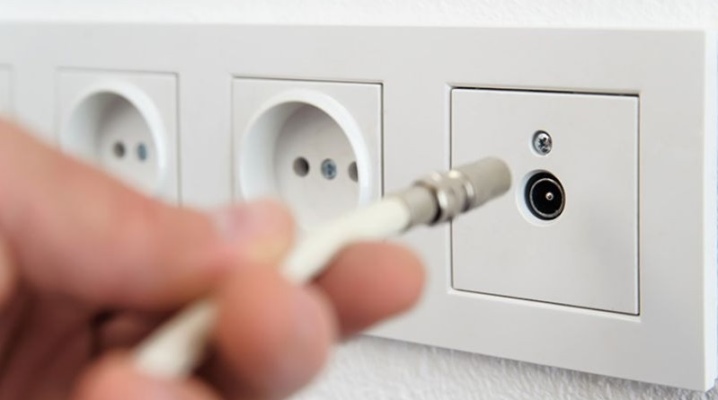
In order to connect the antenna to the TV, you need to use a special cable, its main function is to deliver the signals coming from the antenna and display the audio on the screen. However, almost all television wires have a significant drawback - a decrease in signal quality. That is why the question of choosing a cable must be treated as responsibly as possible.
In our article we will talk about the features of television cables, their varieties and introduce you to the intricacies of choosing the optimal model.
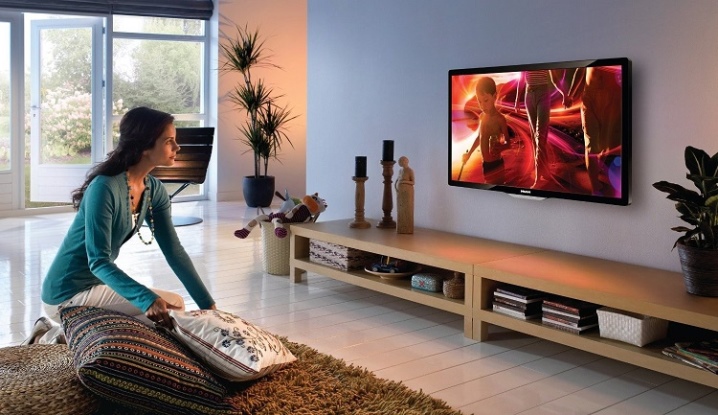
Features and device
Television cable differs from standard network wires in a more complex structure, so each of its elements should be considered separately.
Lived
It is a central wire that, when viewed visually, resembles a core. It is made of steel or copper alloys, the second option is more practical from the point of view of safety, since copper is more exposed to heating and has an overestimated thermal conductivity parameter.
Accordingly, when overcurrents pass through the wires or during a short circuit, a rather rapid heating and an increase in impedance can occur, to which the TV fuse immediately reacts. Steel alloys in such a situation will be less effective.
In addition, wires in which the core is thicker, about 1 mm, are preferable, since the attenuation coefficient decreases with increasing diameter.
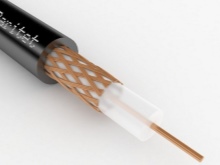

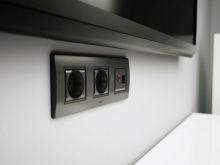
Screen
It is an outer conductor that prevents the incoming signal from being attenuated when it enters the wire. Its function is comparable to that of a satellite dish reflector. To date, screens are presented in three versions: this is a wire braid, as well as an aluminum film or foil. The first option is considered the least expensive, so these cables are the cheapest. However, in this case, the external cable is not continuous, and accordingly, the attenuation rate is greatly increased.
These wires can only be used when the TV is operated from an indoor antenna, Significant signal loss is literally guaranteed if the distance of the receiver from the TV is more than 1 m. Foil and aluminum film are solid screens, so attenuation can be minimized and even reduced to zero.
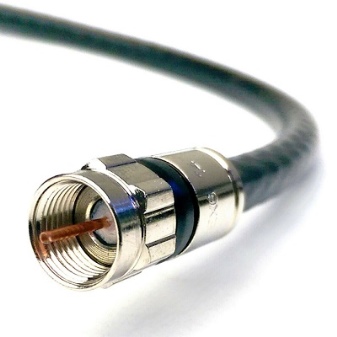
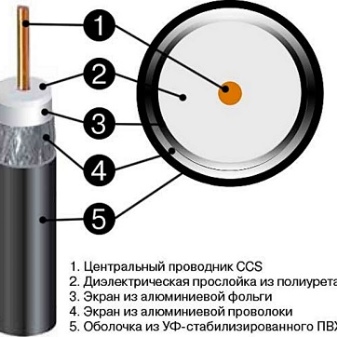
When connecting satellite and terrestrial TV from an outdoor antenna, just such models are recommended, while foil is preferable, although it should be borne in mind that this is not a very flexible material, prone to destruction with a large bend.
If you are installing an antenna on the roof of the MKD, then you will need a longer wire in order to lead it to the apartment. In this case, strong bends are not excluded, so it is better to pay attention to the most expensive version of the cable for TV. Such models include a layer of foil and are reinforced with a surface braid. The metallized foil here helps to improve the signal quality, and the braid protects the screen from mechanical damage in the folded areas.
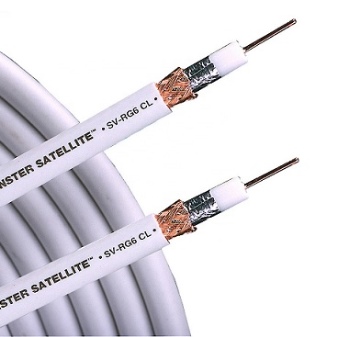

Shell
It consists of an insulating layer, it is made of PVC or polyethylene. It can be black or white, gray models are a little less common. It is possible to choose a cable without taking into account the peculiarities of the sheath, since it does not affect the operating parameters of the cable in any way. However, it is worth making a choice in favor of a more durable material, since it is less susceptible to overheating and wear.
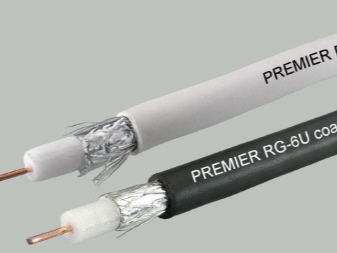
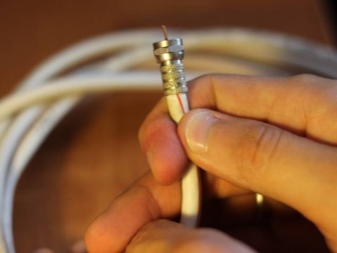
Plug
The modern market offers plugs in two versions: in the form of a single design or in the version with a nut. In the second case, in order to connect the TV, you just need to strip the cable, expose it and insert it inside the plug, then tighten it tightly. This method is optimal for those people who do not have the skills to work with an electrician and want to quickly and easily install the antenna wire on their own.
If you have at least minimal experience of "communicating" with a soldering iron, then it is better to give preference to the plug of a fused design and connect the equipment by soldering wires.

Species overview
If the antenna wire is presented in stores in only one version, then there are much more television cables, and each of them is characterized by its own characteristics of information output and design. Let's take a closer look at the most common types of television wires.
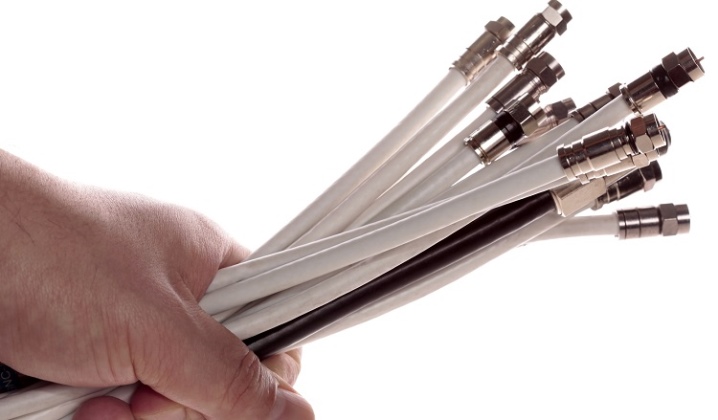
Coaxial
The most popular type of TV cable. It should be noted that coaxial includes not only some antenna wires, but also all other electrical cables that assume in their structure a central core (it can be one or more), as well as a screen (it serves as an outer conductor) and an insulating material.
Coaxial cable is suitable for broadcasting terrestrial television, it is also popular with TV providers for connecting to cable channels.
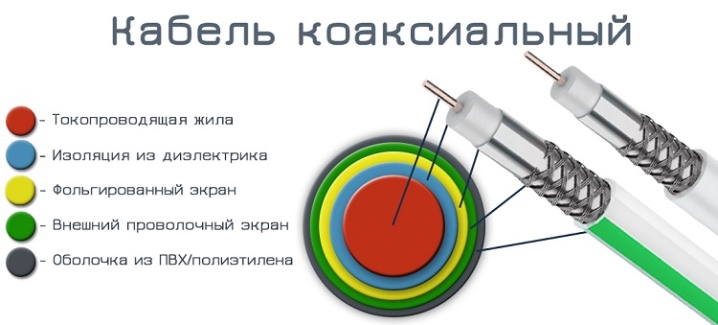
Composite
This type includes cables that have a splitter, 2 or more connectors can extend from them, therefore the name fully reflects the multitasking of the part - it is responsible for transmitting several working formats at once. If we are talking about TV, then here he takes responsibility for the separate display of audio and sound on the screen after decoding.
Typical representatives of models of this type - RCA and AV cables for TV. In addition, they have found wide application in connecting speaker systems, audio devices and video players to the TV screen.
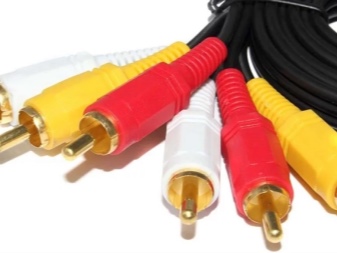
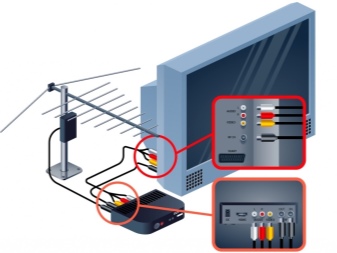
Component
Visually, these wires resemble composite ones, but the principle of their operation is completely different. So, all available inputs can output an image, but only one of them with a picture transmits sound at the same time. The bandwidth of component cables is much higher than that of composite cables. Such wires are relevant for connections with strong output of audio and video content, that is, they are not suitable for digital broadcasting.
They should be purchased if you plan to view multimedia from an electronic storage device or through interactive TV.
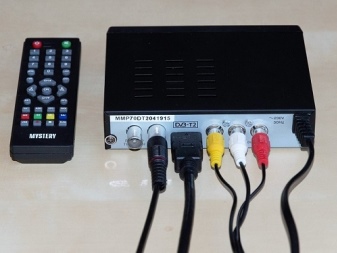
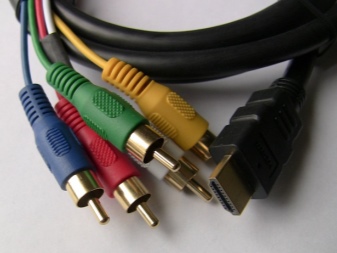
HDMI
With the widespread adoption of widescreen TV in digital broadcasting, 4K broadcasting has become possible. Despite the preliminary compression, for broadcasting efficiency, which includes broadcasting of high-definition audio, you need to transfer quite impressive amounts of data. All previously used products did not have enough bandwidth for this. That's why a brand new HDMI cable was created.
If the TV has a connector for this type of wire, then the device will be able to support the output of an ultra-high definition picture. Such wires are widely used in modern Smart TVs and, in terms of their functionality, are fully comparable to a computer, since they provide a strong video adapter from 1 GB.
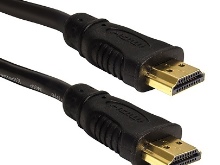

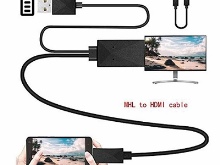
If you plan to use graphic applications or video games, then it is better to make connections from a video card that has a VGA connector; a DVI cable is optimal for such designs.
It is possible to determine which of these cables should be taken to connect such a set-top box, based on the parameters of the maximum resolution of television equipment, since when connecting wires with maximum bandwidth, not only the clarity of broadcasting increases, but also the power consumption of the receiver increases many times over.
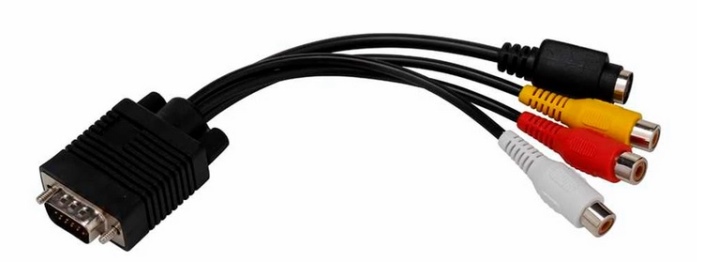
Top brands
All existing types of cables have a common architecture that allows you to provide the required output format for audio and video information. However, the physical parameters that are responsible for the period of operation and the procedure for using the wire may vary.
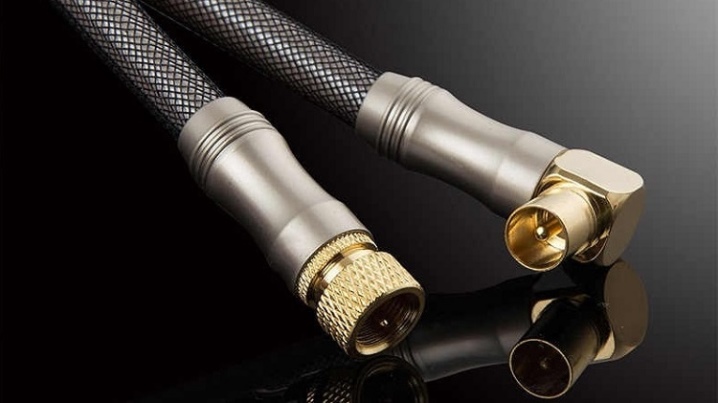
RG- 6U
This is a universal brand of wires in terms of price and quality. Such a cable has a copper core and reliable double insulation, which retains the possibility of bending and maintains a reduced attenuation rate. However, this product has its own minus - a weak level of wear resistance, since the braid in it is made of polyethylene of the lowest density.
This cable can only be used indoors and to connect to a home antenna.
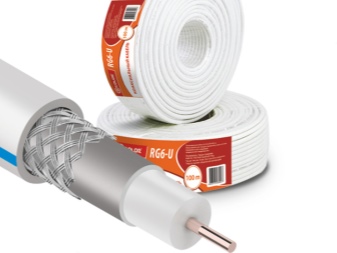
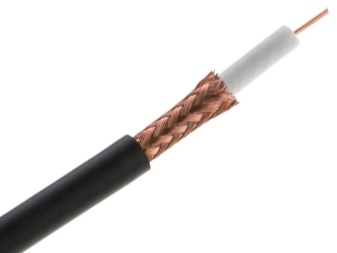
SAT- 50
One of the most demanded TV cable models in our country. It has a copper core, and the screen is made of an aluminum film with an additional copper braid. The insulating material is high-density plastic, which allows the cable to be used for 15–20 years. The television wire of this brand perceives well the signals coming from the repeater and the satellite due to a core with a diameter of 1 mm.
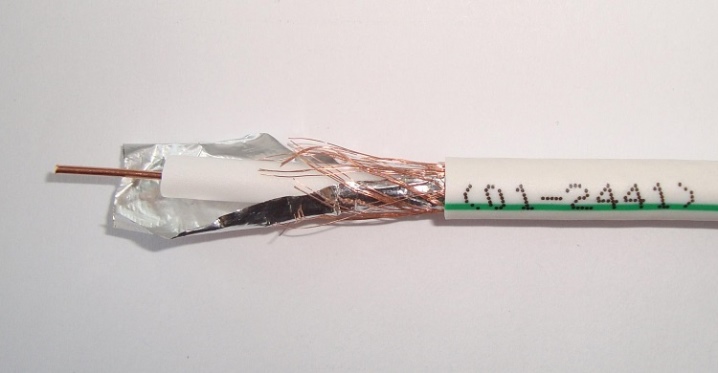
DG-113
Such a cable is quite expensive. The insulating material, as well as the core in it, have technical and operational parameters similar to those of SAT-50.
The only difference between this product is reinforced screen with parameters to increase the signal up to 90 dB. Such a cable is indispensable in situations where there is a considerable distance from the antenna to the TV, for example, when the antenna is installed on the roof of an apartment building, and the wire must be extended to the apartment. When laying such a cable at a distance of up to 40 mm, picture distortions and other defects do not appear.
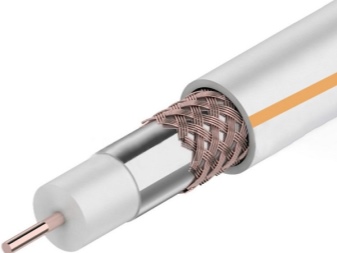
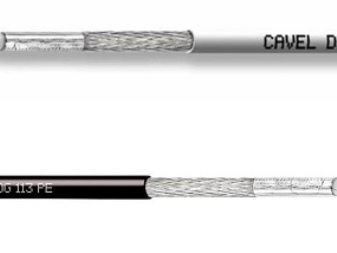
SAT- 703
This cable is almost a complete analogue of the SAT-50 product, however it is designed for use in more difficult weather conditions.
Its distinctive feature is a vein made of steel. This material heats up more slowly and is more resistant to temperature fluctuations. The price of such a model is comparable to the SAT-50, so it makes no sense to purchase a wire for a room - this will only cause unnecessary, and meaningless, costs.

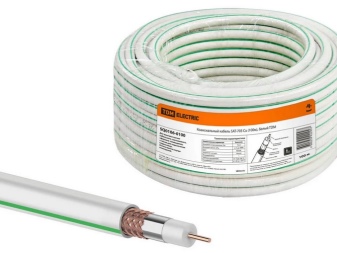
Which to choose?
Before deciding to buy a TV cable, you need to decide on the following data:
- what format your television equipment accepts: analog or digital;
- how much equipment do you plan to connect;
- features of the TV-out, adapter and socket;
- cable routing diagram;
- the length of the route from the antenna to the TV;
- the presence of plots outside the residential area, indicating whether they are located at the entrance of an apartment building or on the street of a private building;
- number of turns;
- the need to install closed or open wiring.
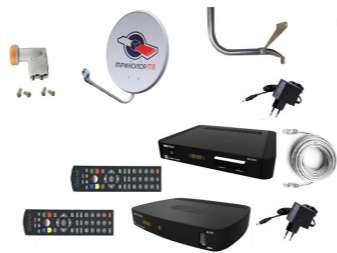

Based on the collected data, it is necessary to determine the technical and operational parameters of the cable. All presented television wires are divided into black and white: the black ones are covered with PVC film, the white ones are covered with polyethylene.... The practicality and durability of the product largely depends on the density of this layer. Although it is better not to overdo it with these parameters, since if the cable has a too thick outer coating, then it will practically not bend, and this can cause serious difficulties when it is carried out from the antenna.
As for the screen, then it is better to give preference to foil or aluminum film with braid. Both options are suitable for "transporting" a high-quality signal. Pay particular attention to the presence of a dielectric layer.It is necessary for maximum fixation of the conductors, and in addition, it serves as reliable insulation.
Foamed polyvinyl chloride copes with this task best of all, there are also models in which the interlayer is made of polyethylene or fluoroplastic.
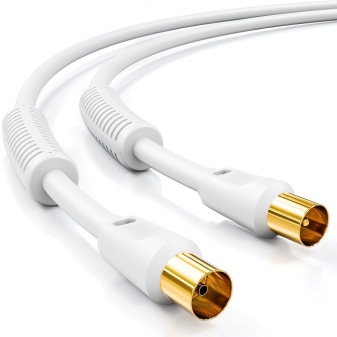

Specify what the core is made of. The highest quality products contain a copper core, in cheaper samples it is made of alloys and covered with the thinnest copper layer. The central vein is between 0.3 mm and 1 mm thick, the thicker it is, the better. The cross-section of the cable itself also matters. If it is less than 3.5 mm, then it provides access to decimeter channels only. To add digital channels to this list, you will need to use additional equipment. In this case, the costs simply do not justify the final result, therefore, it is initially better to purchase a cable with a thickness of 3.5 mm or more.
Not the least important is the cost, since it depends on many important parameters. In this case, the adage "the miser pays twice" justifies itself 100%. More expensive wire options are also more preferable.
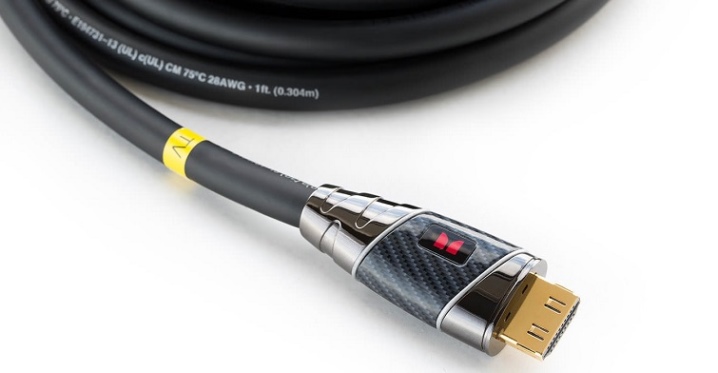
A Few Tips
If the antenna is located nearby, that is, on the TV itself, on the balcony, then a wire with a diameter of 6 mm will be quite enough. In order to bring it to the last floor of an apartment building or to the roof of a private one - it is worth choosing wires whose corresponding parameter exceeds 7 mm. Don't forget about the electromagnetic background.
A sign of low-quality products is the absence of a screen, connecting to a similar product via satellite, you will only see distortion, interference and other failures.
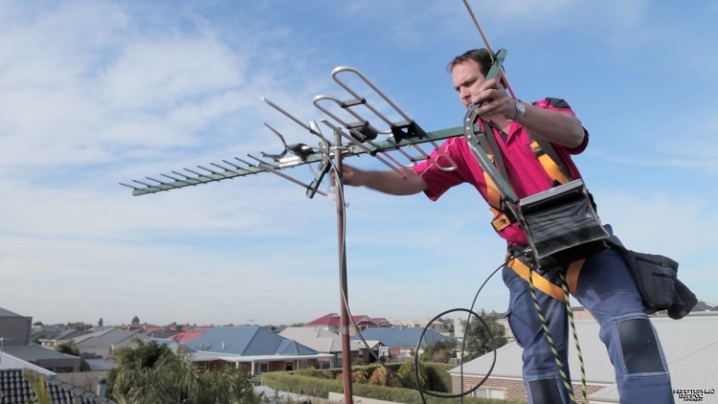
Exploitation
It is very important to properly connect the cable to the TV. There are two types of fasteners: crimp plugs and screw plugs. The easiest way is to connect using an angled or straight F plug, and for the wiring itself, you can use the most ordinary knife. The work includes several steps.
- Cut the outer layer of the cable to a length of about 1.5 cm and peel it off, after that, the screen and foil must be wrapped, the insulating layer must be removed, the core must be released and screwed onto the plug.
- Then you need trim the protruding part main conductor to the required length.
- The ferrule should be carefully wrapped around the edge, cut the insulating surface to a length of about 6 mm and remove. The cleaned part must be freed from all layers to the copper tube - this must be done as carefully as possible, since in case of damage, the signal quality will significantly deteriorate.
- Slide the sheath lengthwise until the inner fiber starts to protrude from the center. After that, it remains only to connect the connector to the end of the wire, clamp it with the prepared ferrule, ring the equipment and make sure it is working.
- Next you need cut off all protruding wires, turn on the TV and enjoy watching your favorite TV programs.
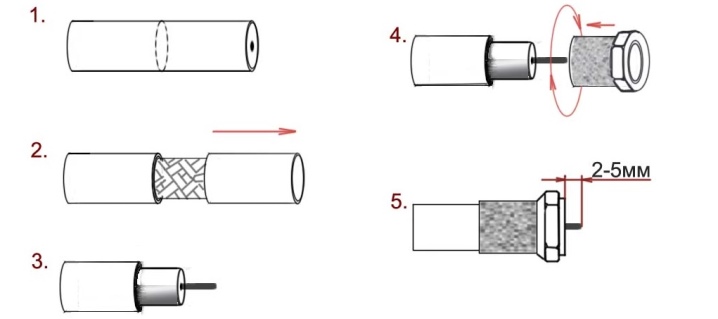
For how to connect the antenna cable to the plug, see the following video.













The comment was sent successfully.